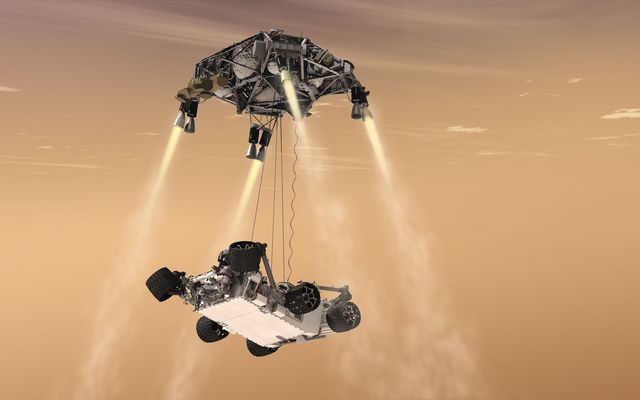Space is a natural environment for robots and much of the work that can and will be done in space will fall to purpose-built robotic machines. While robots on Earth a busily doing things we don’t want to do or which they can do a lower cost, robots in space will be doing things we are not able to do, or at extremely lower cost.
Robots bring a lot of benefits to the table. They can operate in hostile environments, be remotely controlled, incorporate any number of intelligent features required for the task, be produced and deployed with relative economy.
There are probably many projects that could be come viable only with robotic assistance. A project to create a radio telescope array on the far side of the moon is one such project.
thumbnail courtesy of space.com
BOULDER, Colorado — Researchers are making strides on a radio telescope array that would be unfurled on the far side of the moon by an unmanned rover operated by nearby astronauts.
The rover would be commanded by astronauts in NASA’s Orion spacecraft, which would be hovering in a gravitationally stable spot near the lunar far side called Earth-moon Lagrange Point 2 (L2). Now, a university team has developed a system that mimics rover control to recognize potential problems with human-telerobotic operations, such as time lags and communication quality.
The moon rover work was presented during the NASA Exploration Science Forum, which was held July 21 through July 23 at NASA’s Ames Research Center in Moffett Field, California. The conference was organized by the Ames-based Solar System Exploration Research Virtual Institute (SSERVI). [21 Most Marvelous Moon Missions of All Time]
The team has developed a telerobotic simulation system that includes tools for imitating the complications associated with remote rover operations. These tools include methods for mitigating issues of latency — the delay time between stimulus and response — and communication quality between orbiting astronauts and surface-based rovers.
How Robots Could Build a Radio Telescope on Far Side of the Moon






